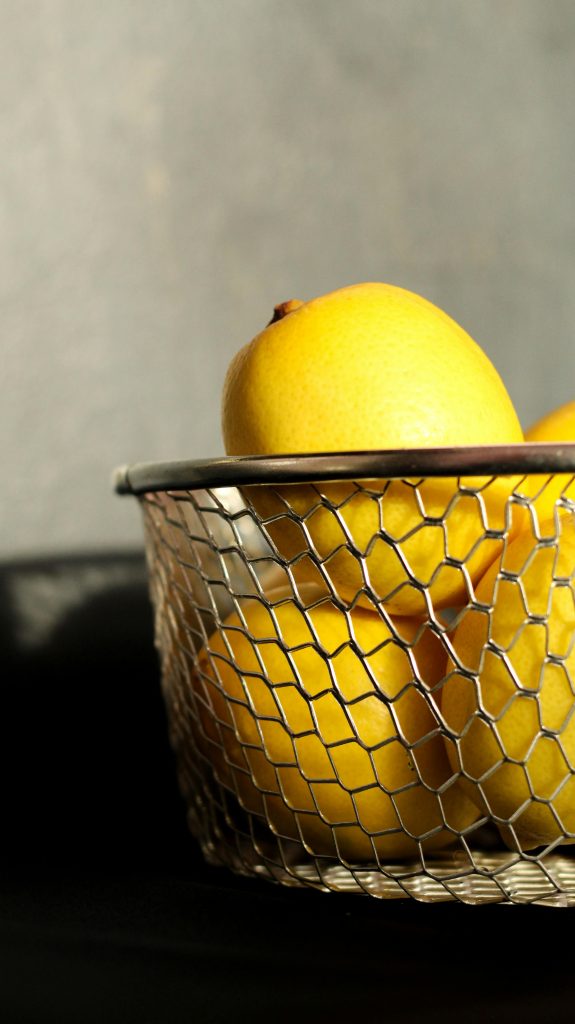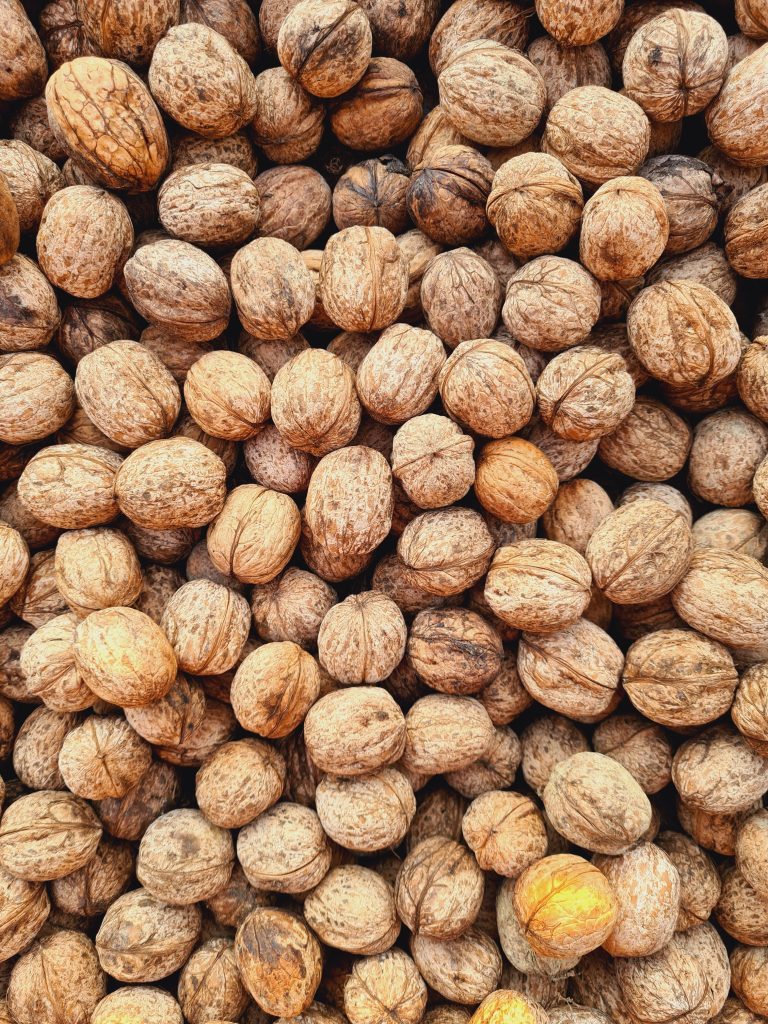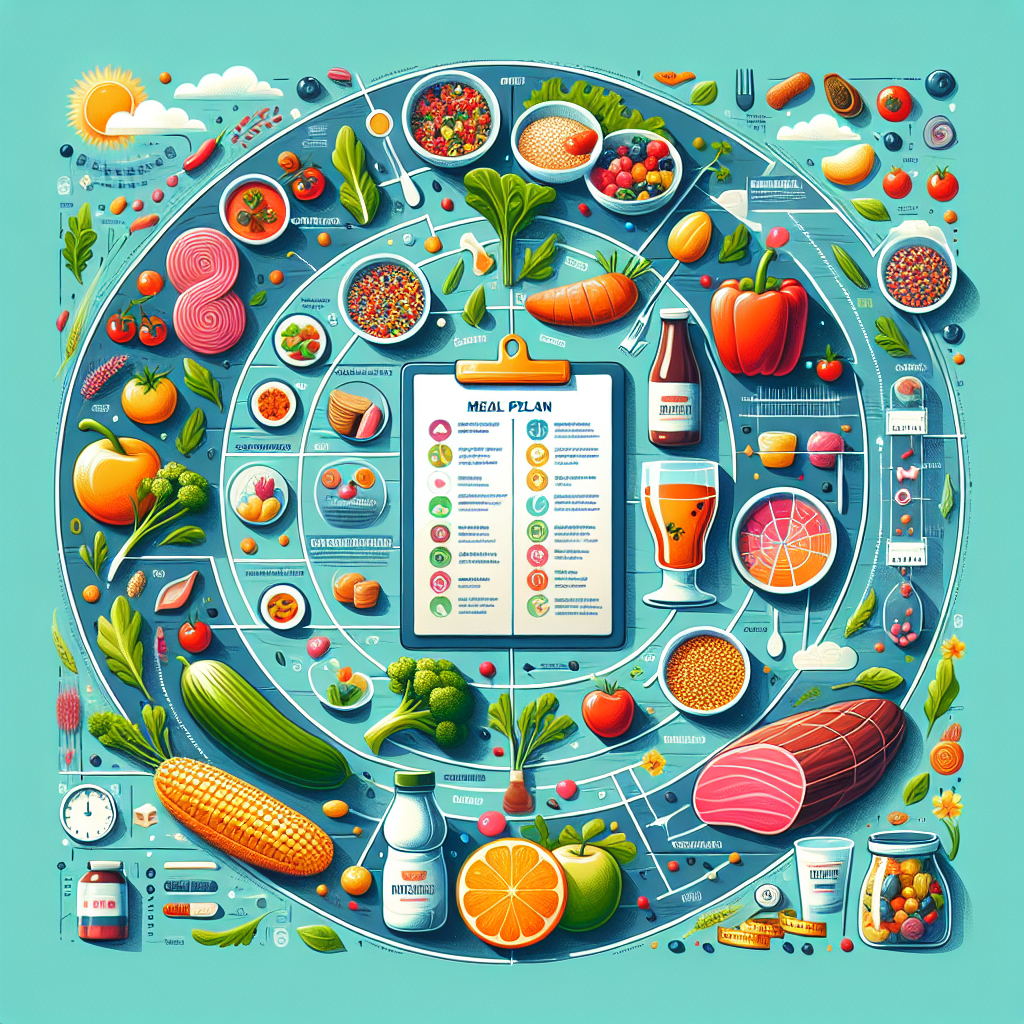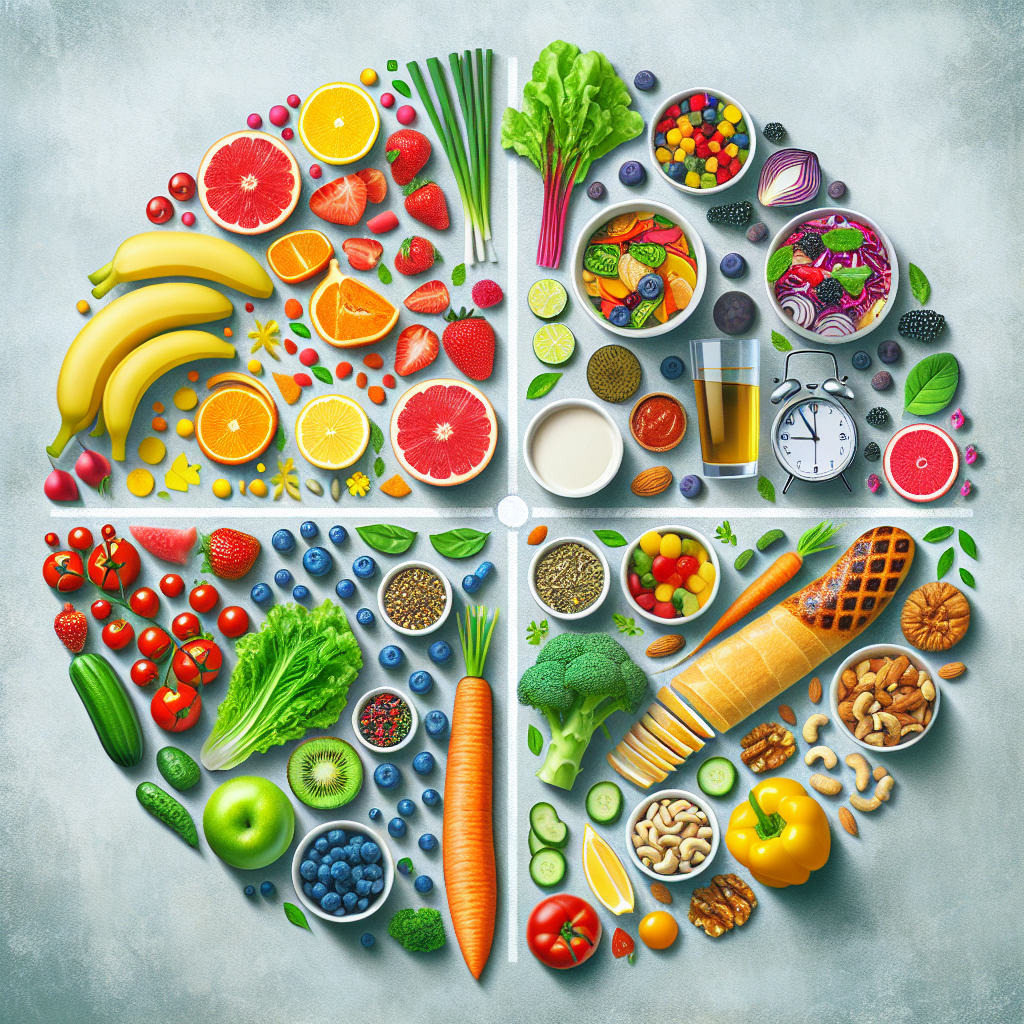Are you looking to live a healthier lifestyle? Look no further, because “Delicious and Nutritious: Healthy Meal Plans for a Vibrant Life” is here to guide you towards a more balanced and nourishing diet. In this article, we will explore the benefits of healthy living and provide you with some mouthwatering meal plans that will leave you feeling energized and satisfied. Whether you’re a seasoned health enthusiast or just starting your wellness journey, this article is sure to provide you with the tools you need to achieve a vibrant and fulfilling life. Get ready to embark on a delicious adventure towards better health!

The Importance of Healthy Meal Plans
Good nutrition is the foundation of a healthy lifestyle, and meal planning plays a crucial role in ensuring that you have balanced, nutritious meals throughout the day. By following a healthy meal plan, you can provide your body with the fuel it needs to function optimally, maintain a healthy weight, and reduce the risk of chronic diseases. In this article, we will explore the importance of healthy meal plans in terms of balanced nutrition, energy and productivity, and disease prevention.
Balanced Nutrition
A healthy meal plan is all about balance. It involves incorporating a variety of foods from different food groups to provide the essential nutrients your body needs to thrive. By including foods from all the major food groups – fruits, vegetables, whole grains, lean proteins, and healthy fats – you can ensure that your meals are packed with vitamins, minerals, fiber, and antioxidants.
A balanced diet not only provides the necessary nutrients for your body but also helps maintain a healthy weight. When your meals consist of a good balance of macronutrients and micronutrients, you are less likely to overeat or indulge in unhealthy snacks. This, in turn, can help prevent weight gain and the associated health problems, such as obesity, diabetes, and heart disease.
Energy and Productivity
Eating a well-balanced meal can have a significant impact on your energy levels and overall productivity. When you provide your body with the right mix of carbohydrates, proteins, and fats, you ensure a steady release of energy throughout the day. This helps prevent the mid-afternoon slump and keeps you feeling energized and alert.
Eating a healthy meal plan can also enhance your cognitive function and improve concentration and focus. By nourishing your brain with the right nutrients, such as omega-3 fatty acids and B vitamins found in fish, nuts, and whole grains, you can sharpen your thinking skills and enhance your mental clarity.
Disease Prevention
The saying “you are what you eat” holds true when it comes to disease prevention. A healthy meal plan can significantly reduce the risk of developing chronic diseases, such as heart disease, type 2 diabetes, and certain types of cancer. By providing your body with the necessary nutrients and antioxidants, you support a strong immune system and ward off cellular damage.
A diet rich in fruits, vegetables, whole grains, and lean proteins helps reduce inflammation in the body, which is often a precursor to many chronic diseases. Including foods high in antioxidants, such as berries, leafy greens, and nuts, can help combat oxidative stress and improve overall health.
Building a Healthy Plate
Now that we understand the importance of healthy meal plans, let’s delve into the practical aspects of building a healthy plate. Building a healthy plate involves understanding the food groups, practicing portion control, and making colorful and varied choices.
The Food Groups
The food groups provide a framework for creating a well-balanced meal. Here’s a breakdown of the different food groups and their importance in a healthy meal plan:
-
Fruits and vegetables: These should make up a significant portion of your plate, as they are rich in vitamins, minerals, and fiber. Aim to include a variety of colorful fruits and vegetables to maximize the nutritional value of your meals.
-
Whole grains: Opt for whole grains such as brown rice, quinoa, whole wheat bread, and oats. These provide essential nutrients, including fiber, that promote good digestion and help keep you feeling fuller for longer.
-
Lean proteins: Include lean sources of protein such as chicken, fish, tofu, beans, and legumes. Protein is essential for building and repairing tissues, as well as for maintaining a healthy immune system.
-
Healthy fats: While fats should be consumed in moderation, incorporating sources of healthy fats like avocados, nuts, and olive oil can provide essential fatty acids and promote heart health.
Portion Control
While it’s vital to choose healthy foods from different food groups, it’s equally important to practice portion control. Even nutritious foods can lead to weight gain if consumed in excessive quantities.
Aim to fill half of your plate with fruits and vegetables, one-quarter with whole grains, and one-quarter with lean proteins. This way, you ensure a well-balanced meal while keeping your portion sizes in check.
Colorful and Varied Choices
Eating a variety of colors on your plate not only makes your meals visually appealing but also ensures that you’re getting a wide range of nutrients. Different colors in fruits and vegetables signify different nutrients, so including a colorful array of produce in your meals ensures that you’re getting a good mix of vitamins and minerals.
Experiment with different recipes and try new fruits, vegetables, and whole grains to keep your meals interesting and varied. This not only prevents meal boredom but also exposes you to a wider range of nutrients.
Meal Prep for Success
Meal prep is a fantastic way to stay on track with your healthy meal plan and make nutritious choices throughout the week. By planning and preparing your meals in advance, you save time, money, and make healthier choices more accessible. Here are some tips for successful meal prep:
Planning and Preparation
Start by creating a weekly meal plan. Look for recipes that align with your dietary goals and preferences, and make a list of ingredients you’ll need. Once you have your meal plan and shopping list ready, set aside a specific time each week to do your grocery shopping and meal prep.
When prepping your meals, focus on batch cooking. Cook larger quantities of your favorite recipes and divide them into individual portions for easy grab-and-go meals. Use containers that are microwave-safe and stackable for easy storage. You can also pre-cut fruits and vegetables for quick snacks or use them as salad toppings.
Batch Cooking
Batch cooking involves preparing larger quantities of food in advance to save time and have ready-to-eat meals on hand. It’s an excellent strategy for busy individuals or families who don’t have time to cook every meal from scratch.
Choose recipes that freeze well, such as soups, stews, casseroles, and grilled proteins. Cook a big batch, divide it into individual servings, and store them in the freezer for future meals. This way, you always have a healthy option available when time is limited.
Storage and Labeling
Proper storage and labeling are crucial to maintain food safety and prevent waste. Invest in airtight containers and label them with the contents and date to ensure freshness and avoid confusion.
When storing cooked meals in the refrigerator, divide them into individual servings for easy access. This prevents you from overeating or having to reheat an entire batch when you only need a portion. Remember to rotate your meals, using the oldest ones first to minimize food waste.
By incorporating meal prep into your routine, you set yourself up for success on your healthy eating journey. It simplifies the process and allows you to make mindful choices even on busy days.
Breakfast Ideas for a Nutrient-Packed Start
They say that breakfast is the most important meal of the day, and for good reason. Eating a nutritious breakfast sets the tone for the rest of the day, providing essential energy and nutrients to fuel your body and mind. Here are some nutrient-packed breakfast ideas to kickstart your day:
Protein-Packed Smoothies
Smoothies are a versatile and delicious way to pack a punch of nutrition into your breakfast. Start with a base of liquids like almond milk or Greek yogurt, add a handful of leafy greens like spinach or kale, and then blend in your choice of fruits for sweetness. For an extra protein boost, add a scoop of protein powder or a dollop of nut butter. Smoothies are also a fantastic way to sneak in additional superfoods like chia seeds or flaxseeds.
Whole Grain Cereal Bowls
Opt for whole grain cereals instead of sugary, processed ones to get a fiber-rich and nutrient-dense breakfast. Look for cereals that have minimal added sugars and a good mix of whole grains, nuts, and seeds. Pair your cereal with low-fat milk or plant-based milk alternatives, and top it with fresh fruits, nuts, and a drizzle of honey for added sweetness.
Energizing Egg Dishes
Eggs are a nutrient powerhouse, packed with high-quality protein and essential vitamins and minerals. Scramble some eggs with vegetables like peppers, onions, and spinach for a quick and easy omelet. If you’re feeling adventurous, try making a veggie-packed frittata or a crustless quiche. Pair it with whole grain toast or a side of fresh fruit for a complete and satisfying breakfast.
By starting your day with a nutrient-dense breakfast, you set yourself up for success in terms of energy, focus, and overall well-being. Experiment with different recipes and find what works best for your taste preferences and dietary needs.

Lunches to Keep You Satisfied All Day
Lunchtime can often be a challenge, especially when you’re on the go or faced with limited options. However, with a little planning and creativity, you can enjoy a delicious and nutritious lunch that keeps you satisfied all day long. Here are some lunch ideas to inspire your midday meals:
Salad Jar Creations
Mason jar salads are a convenient and portable way to enjoy a variety of flavors and textures in your lunch. Start by layering your dressing at the bottom of the jar, followed by ingredients like grains, proteins, and vegetables. Finish it off with leafy greens on top to prevent wilting. When you’re ready to eat, simply shake the jar to mix the ingredients and enjoy a fresh and vibrant salad.
Wraps and Sandwiches
Wraps and sandwiches are classic lunch options that can be customized to fit your taste preferences. Opt for whole grain bread or wraps and load them up with lean proteins like turkey, chicken, or tofu. Include plenty of fresh vegetables and add a spread like hummus or avocado for extra flavor and creaminess. You can also experiment with different condiments and seasonings to create unique flavor combinations.
Nourishing Buddha Bowls
Buddha bowls, also known as grain bowls or power bowls, are a trendy and nutritious lunch option. Start with a base of grains like quinoa or brown rice and top it with a variety of cooked and raw vegetables. Add a source of plant-based protein like chickpeas or tofu and drizzle with a flavorful dressing. Buddha bowls are not only visually appealing but also a great way to incorporate a wide range of nutrients in one meal.
Don’t settle for boring or unhealthy lunches. With a little planning and creativity, you can enjoy satisfying and nutritious midday meals that keep you fueled and focused for the rest of the day.
Simple and Nourishing Dinners
After a long day, the last thing you want is a complicated and time-consuming dinner. However, with a little meal planning and some simple recipes, you can enjoy delicious and nourishing dinners that are quick to prepare. Here are some ideas to get you started:
One-Pan Meals
One-pan meals are a game-changer when it comes to weeknight dinners. They minimize cleanup and streamline the cooking process, making it easier than ever to enjoy a home-cooked meal. Choose a protein source like chicken, fish, or tofu, and pair it with a variety of vegetables. Season with herbs, spices, and a healthy oil like olive oil, and roast or sauté everything together in one pan. The result is a flavorful and nutritious dinner without the hassle.
Vegetarian Delights
Even if you’re not a vegetarian, incorporating meatless meals into your dinner rotation can have significant health benefits. Plant-based dinners are often rich in fiber, vitamins, and minerals, and can be just as satisfying as meat-based meals. Try recipes like lentil curry, black bean tacos, or roasted vegetable pasta. Don’t be afraid to experiment with different vegetables, grains, and legumes to discover new and exciting flavors.
Lean Protein Options
If you prefer to include meat in your dinners, opt for lean protein options like grilled chicken breast, salmon, or shrimp. Pair your protein with a side of roasted or steamed vegetables and a whole grain of your choice. Lean protein options are low in saturated fat and provide essential amino acids to support muscle growth and repair.
Remember that dinner doesn’t have to be complicated to be healthy and delicious. With a few simple ingredients and some creative meal ideas, you can enjoy balanced and nourishing dinners every night of the week.

Snack Time Solutions for Hunger Pangs
Snacks play an important role in maintaining energy levels throughout the day and preventing overeating at mealtime. However, it’s essential to choose healthy options that provide sustained energy and essential nutrients. Here are some snack ideas to satisfy your hunger pangs:
Crunchy Veggie Sticks with Dips
Chop up a variety of fresh vegetables like carrots, celery, bell peppers, and cucumbers for a satisfying and nutrient-packed snack. Pair them with a flavorful dip like hummus, Greek yogurt, or guacamole for added protein and creaminess. This combination provides a good mix of fiber, vitamins, and minerals while keeping your taste buds happy.
Homemade Energy Bars
Store-bought energy bars often contain added sugars and artificial ingredients. Instead, try making your own homemade energy bars to have a healthier, homemade option on hand. Combine oats, nuts, seeds, and dried fruits in a food processor, and then bind them together with natural sweeteners like dates or nut butter. These homemade bars are packed with fiber, healthy fats, and antioxidants, making them a great choice for an on-the-go snack.
Greek Yogurt Parfaits
Greek yogurt is an excellent snack choice, as it’s high in protein, calcium, and probiotics. Create a parfait by layering Greek yogurt with fresh fruits like berries and a sprinkle of granola or nuts for added texture. This snack provides a good balance of macronutrients and keeps you feeling full and satisfied.
When choosing snacks, aim for a combination of protein, complex carbohydrates, and healthy fats. This combination provides sustained energy and helps curb cravings.
Putting the Fun in Healthy Desserts
Desserts can still be part of a healthy meal plan when enjoyed in moderation and made with nutritious ingredients. By opting for healthier alternatives and getting creative in the kitchen, you can enjoy guilt-free treats that satisfy your sweet tooth. Here are some ideas for putting the fun in healthy desserts:
Fruit-Based Treats
Fruits are nature’s dessert, packed with natural sweetness and essential vitamins and minerals. Get creative by incorporating fruits into fun desserts. Make a fruit salad with a variety of seasonal fruits, or skewer them and grill them for a warm and caramelized treat. You can even blend frozen fruits into a smoothie and freeze them into homemade fruit popsicles for a refreshing and nutritious dessert.
Indulgent Dark Chocolate Delights
Dark chocolate is a great option for those craving something chocolatey but still want to make a healthier choice. Dark chocolate with a high percentage of cocoa is rich in antioxidants and lower in sugar compared to milk chocolate. Enjoy a small piece of dark chocolate on its own, or melt it and dip fresh fruits like strawberries or bananas for an indulgent and nutrient-packed dessert.
Frozen Yogurt Popsicles
Satisfy your ice cream cravings with homemade frozen yogurt popsicles. Simply blend Greek yogurt with your choice of fruits and a natural sweetener like honey or agave syrup. Pour the mixture into popsicle molds, insert sticks, and freeze until solid. These frozen yogurt popsicles are a refreshing and guilt-free option for a hot summer day.
Remember to enjoy desserts in moderation and savor each bite. By incorporating healthier ingredients and getting creative in the kitchen, you can find joy in satisfying your sweet tooth without sacrificing your health goals.

Healthy Drinks for Hydration and Flavor
Staying hydrated is essential for overall health and well-being, and choosing healthy drinks can help you reach your hydration goals while adding flavor and variety to your meals. Here are some healthy drink ideas to keep you hydrated and satisfied:
Infused Water Recipes
Infused water is a fantastic way to add natural flavor to your hydration routine. Simply mix slices of fruits, vegetables, or herbs with water and let them infuse for a few hours in the refrigerator. Some popular combinations include cucumber and mint, lemon and ginger, or watermelon and basil. Not only does infused water taste refreshing, but it also provides a good dose of vitamins and minerals.
Herbal Teas
Herbal teas are a great alternative to sugary beverages and can be enjoyed hot or cold. Choose herbal teas made from natural ingredients like chamomile, peppermint, or hibiscus for a refreshing and caffeine-free option. Herbal teas are known for their calming and soothing properties, making them perfect for both relaxation and hydration.
Smoothie Combinations
Smoothies are not just for breakfast; they can also be enjoyed as a refreshing drink throughout the day. Get creative with your smoothie combinations by blending different fruits, leafy greens, and liquid bases like coconut water or almond milk. Adding a scoop of protein powder or Greek yogurt can provide an extra boost of nutrition. Smoothies are an excellent way to stay hydrated while enjoying a nutrient-packed and delicious drink.
Avoid sugary drinks, sodas, and artificial sweeteners, as they can contribute to weight gain and have negative health effects. Instead, opt for natural and low-calorie options that provide hydration and essential nutrients.
Conclusion
Incorporating healthy meal plans into your lifestyle is a powerful way to prioritize your health and well-being. By focusing on balanced nutrition, practicing portion control, and making colorful and varied choices, you can provide your body with the necessary nutrients it needs to thrive. Meal prep can help you stay on track and make healthier choices, while nutrient-packed breakfasts, satisfying lunches, nourishing dinners, and thoughtful snacks cover your daily nutritional needs. Don’t forget to treat yourself to fun and healthy desserts and hydrate with refreshing drinks. By adopting a comprehensive approach to healthy eating, you can enjoy a vibrant and fulfilling life. Cheers to your health!



